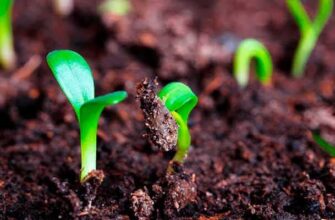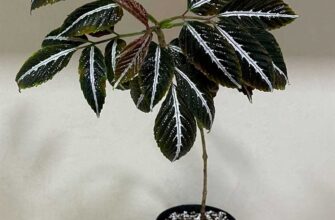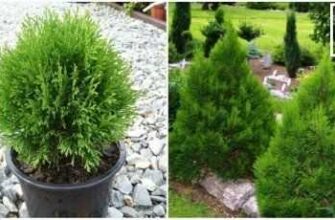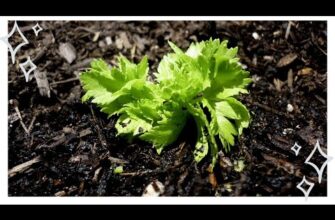- Арабис: выращивание из семян, виды и сорта
- Описание растения арабис
- Как покупать и выбирать семена арабиса
- Подготовка грунта для посева арабиса
- Правила посева арабиса
- Уход за растением арабис
- Полив
- Удобрение
- Обрезка
- Зимовка
- Особенности полива арабиса
- Возможные проблемы и болезни арабиса
- 1. Заболевания и вредители
- 2. Недостаток или избыток полива
- 3. Неподходящие условия выращивания
- Сорта и виды арабиса
- Сорта арабиса для выращивания в саду
- Виды арабиса для декоративного использования
- Применение арабиса в ландшафтном дизайне
- Собирание семян арабиса
- Вопрос-ответ:
- Как вырастить арабис из семян?
- Какие виды арабиса существуют?
- Какие сорта арабиса популярны среди садоводов?
- Какое время года лучше всего сеять арабис?
- Какой уход требуется для арабиса после посева?
- Видео:
- Копеечные растения, а выглядят на миллион! МНОГОЛЕТНИКИ

Арабис – это однолетнее или многолетнее растение семейства капустных. Оно известно своей привлекательной цветочной листвой и яркими соцветиями. Часто используется для украшения садов, парков и клумб.
Выращивание арабиса из семян является наиболее распространенным способом его размножения. Для этого необходимо набрать семена, посеять их в подходящую почву и обеспечить оптимальные условия для роста и развития растения. Важно помнить, что арабис предпочитает солнечное место и рыхлую, увлажненную почву.
Существует несколько видов и сортов арабиса, каждый из которых отличается своими особенностями. Некоторые из них цветут весной, другие – летом или осенью. Некоторые виды арабиса имеют белые, розовые или фиолетовые цветы, а некоторые – даже двуцветные. Очень популярными сортами арабиса являются «Алпийский арабис», «Снежная королева», «Розовый зефир» и «Коралловый ковер».
Арабис: выращивание из семян, виды и сорта
Арабис — это растение, которое пользуется популярностью среди садоводов благодаря своим ярким цветам и легкому уходу. Оно может быть выращено из семян, что позволяет получить новые сорта и виды.
Существует множество видов арабиса, каждый из которых имеет свои особенности. Например, арабис скальный хорошо растет на каменистых участках, а арабис горный предпочитает субальпийские и горные луга. Также есть арабис низкий, который идеально подходит для создания красивых ковровых клумб.
Что касается сортов арабиса, то их также достаточно много. Например, сорт «Snowcap» отличается белыми цветками и обильным цветением. Сорт «Rose Delight» имеет нежно-розовые цветы и декоративные листья. А сорт «Purple Wallflower» порадует фиолетовыми цветками и приятным ароматом.
Выращивание арабиса из семян несложно. Для этого нужно подготовить почву, сеять семена на глубину около 1 см и регулярно поливать. Через некоторое время появятся первые всходы, которые нужно будет проредить, чтобы растения имели достаточно места для роста.
Описание растения арабис
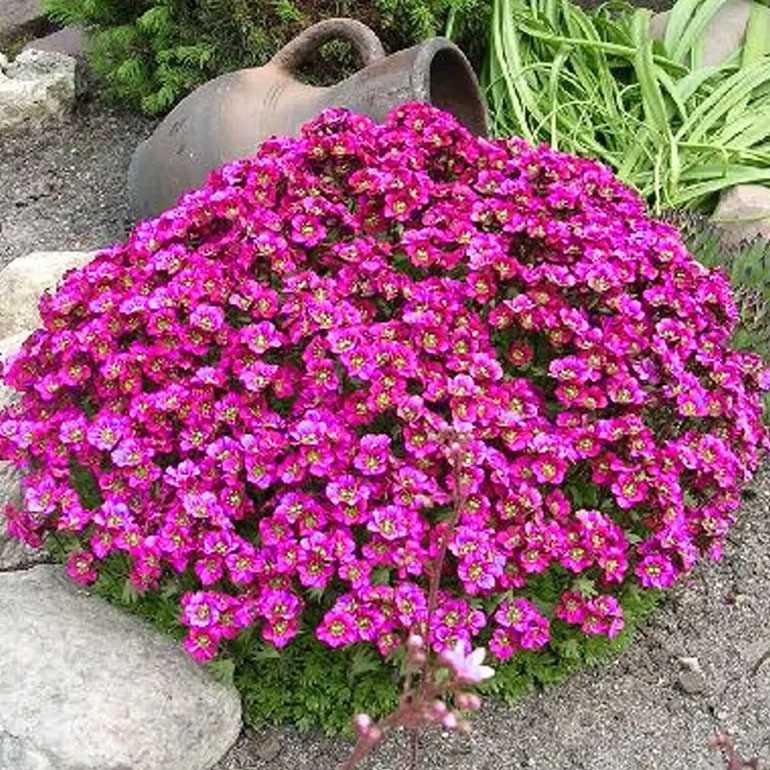
Арабис – это растение из семейства крестоцветных, которое широко распространено в различных уголках мира. Известно более 100 видов и сортов арабиса, каждый из которых обладает своими особенностями.
Арабис обыкновенный (Arabis alpina) – один из самых распространенных видов этого растения. Его выращивание из семян не составляет особого труда. Растение отличается невысоким ростом, компактной кроной и красивыми белыми или розовыми цветками.
Существуют также декоративные сорта арабиса, которые отличаются яркими окрасками цветков и необычной формой листьев. Например, сорт ‘Rosabella’ имеет ярко-розовые цветки с белыми краями, а сорт ‘Little Treasure’ – компактный, с фиолетово-розовыми цветками.
Однако арабис не только красивое декоративное растение, но и полезное растение. Некоторые виды арабиса используются в народной медицине для лечения ряда заболеваний. В листьях и цветках арабиса содержится множество полезных веществ, таких как флавоноиды, каротиноиды и витамин С, которые оказывают положительное влияние на организм человека.
Как покупать и выбирать семена арабиса
Выращивание арабиса из семян — это удивительное занятие, которое может принести много радости и красоты вашему саду. При выборе семян арабиса следует обратить внимание на несколько важных моментов.
- Виды и сорта: перед покупкой семян необходимо определиться с видом и сортом арабиса, который вы хотите вырастить. Существует множество разных видов и сортов арабиса, каждый со своими особенностями и требованиями к условиям выращивания. Изучите информацию о различных видах и сортах арабиса, чтобы выбрать оптимальный вариант.
- Проверка качества: приобретая семена арабиса, обращайте внимание на их качество. Нарушения целостности упаковки, отсутствие маркировки или просроченный срок годности могут говорить о низком качестве семян. При возможности, покупайте семена у проверенных производителей или в специализированных магазинах садоводства.
- Условия хранения: для сохранения качества семян арабиса необходимо правильно их хранить. Обратите внимание на указания производителя по температурным режимам и влажности, при которых следует хранить семена. Перед покупкой убедитесь, что семена были правильно хранены и не подвергались неблагоприятным условиям.
Правильный выбор и покупка семян арабиса — это первый шаг к успешному выращиванию этого растения. Следуйте указанным рекомендациям и наслаждайтесь красотой и уникальностью арабиса в вашем саду.
Подготовка грунта для посева арабиса
Арабис — это цветущее растение, которое можно вырастить из семян. Однако, чтобы успешно вырастить арабис, необходимо правильно подготовить грунт.
Перед посевом арабиса из семян необходимо выбрать подходящую почву. Арабис предпочитает солнечные места и рыхлую, плодородную почву. Поэтому для успешного выращивания арабиса рекомендуется выбирать участок с хорошим освещением и подготовить почву.
Для подготовки грунта для посева арабиса следует следовать нескольким этапам. В первую очередь необходимо провести рыхление почвы, чтобы улучшить ее структуру и обеспечить доступ воздуха к корням растения. Затем следует удалить сорняки и камни, чтобы снизить конкуренцию и обеспечить растению достаточно питательных веществ. После этого рекомендуется вносить органическое удобрение или компост, чтобы обогатить почву и создать оптимальные условия для роста арабиса.
Также стоит учесть, что арабис предпочитает нейтральную или слегка кислую почву. Поэтому перед посевом можно проверить pH-уровень почвы с помощью специальных тест-наборов и при необходимости скорректировать его с помощью добавления соответствующих веществ.
Правила посева арабиса
Для выращивания арабиса из семян необходимо правильно выполнить процесс посева. Во-первых, выберите подходящее место для посадки, где будет доступно достаточно солнечного света. Избегайте теневых участков, так как арабису требуется много света для нормального развития.
Во-вторых, подготовьте почву перед посевом. Она должна быть рыхлой и плодородной. Рекомендуется добавить органическое удобрение или перегной, чтобы обеспечить арабису необходимые питательные вещества для роста. Также рекомендуется уровнять поверхность почвы и удалить сорняки перед посевом.
В-третьих, посев арабиса можно производить как в открытом грунте, так и в горшках или контейнерах. Если вы выбираете посев в открытом грунте, распределите семена равномерно по земле и немного придавите их. Если вы собираетесь выращивать арабис в горшках или контейнерах, используйте хорошо дренированный грунт и посадите несколько семян в каждый горшок.
В-четвертых, ухаживайте за посевами арабиса, обеспечивая регулярный полив и поддерживая оптимальную температуру. Постарайтесь сохранить почву влажной, но избегайте переувлажнения, чтобы не вызывать гниение семян. Также не забывайте о регулярном удалении сорняков и рыхлении почвы вокруг растений.
Следуя этим простым правилам, вы сможете успешно вырастить арабис из семян и насладиться его прекрасным видом в саду или на грядке.
Уход за растением арабис
Арабис – это неприхотливое растение, которое легко выращивать из семян. Однако, чтобы растение хорошо развивалось и радовало своими красивыми цветами, необходимо правильно ухаживать за ним.
Полив
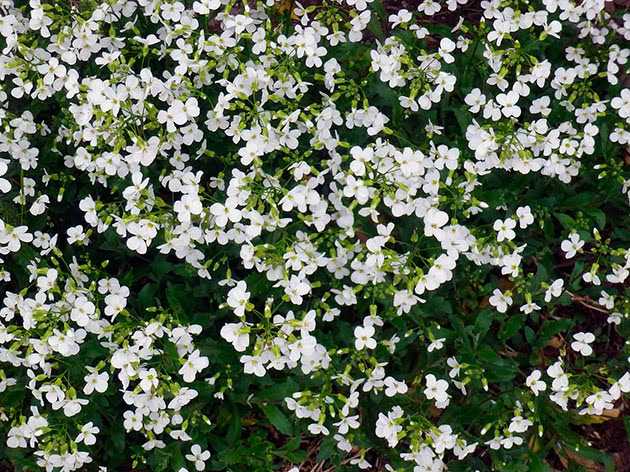
Арабис является достаточно засухоустойчивым растением, но, особенно в период цветения, требует регулярного полива. Важно не подводить растение к переувлажнению, поэтому рекомендуется поливать арабис умеренно, увлажняя почву, но не заливая ее.
Удобрение
Для обеспечения хорошего роста и развития арабиса рекомендуется регулярное подкормка растения. Для этого можно использовать универсальное минеральное удобрение, которое нужно вносить раз в две недели в период активного роста.
Обрезка
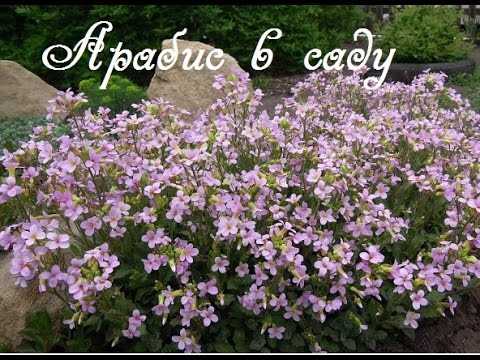
Обрезка арабиса поможет сохранить его компактную форму и увеличить количество цветов. После цветения рекомендуется удалить отцветшие соцветия, чтобы стимулировать образование новых бутонов. Также можно проводить формирующую обрезку растения, чтобы дать ему желаемую форму.
Зимовка

Некоторые сорта арабиса могут переживать зиму в открытом грунте, но большинство видов требуют дополнительной защиты. Перед наступлением зимы рекомендуется укрыть растение сухими листьями или специальным укрывным материалом. Это поможет предотвратить замерзание корней и сохранить растение до следующего сезона.
Особенности полива арабиса
Арабис — это растение, которое выращивается как из семян, так и из черенков. Правильный полив является одной из важных составляющих для успешного выращивания арабиса.
Так стоп!!! Вы всё ещё не подписаны на наши каналы в Телеграмм и Дзен? Посмотрите: ТГ - (@historyfantasydetectivechat) и Дзен (https://dzen.ru/myshortsstorys)
Виды сортов арабиса:
- Арабис скальный;
- Арабис кустарниковый;
- Арабис дельнический;
- Арабис альпийский.
Для полива арабиса необходимо учесть его вид и сорт, а также условия выращивания. Вообще, арабис относится к неприхотливым растениям, однако требует регулярного полива в теплый период года.
Основные особенности полива арабиса:
- Поливайте арабис умеренно, чтобы избежать переувлажнения почвы.
- Поливайте арабис утром или вечером, чтобы избежать негативного воздействия прямых солнечных лучей на растение.
- Поддерживайте уровень влажности почвы равномерным, избегайте ее пересыхания. Почва должна быть влажной, но не мокрой.
- Используйте мягкую воду для полива, чтобы избежать возникновения негативных последствий от содержания в ней избытка минералов.
Следуя этим простым рекомендациям, вы сможете обеспечить арабису оптимальные условия для роста и развития, а также получить красивое и здоровое растение.
Возможные проблемы и болезни арабиса
Выращивание арабиса из семян может столкнуться с несколькими проблемами и болезнями, которые могут повлиять на рост и развитие растения. Важно знать, какие возможные проблемы могут возникнуть, чтобы принять меры по их предотвращению и лечению.
1. Заболевания и вредители
Арабис может подвергаться атаке различных заболеваний и вредителей, таких как грибковые инфекции, мучнистая роса, тля и моль. Чтобы предотвратить эти проблемы, рекомендуется регулярно осматривать растение, обрабатывать его специальными препаратами и поддерживать хорошую вентиляцию и санитарные условия.
2. Недостаток или избыток полива
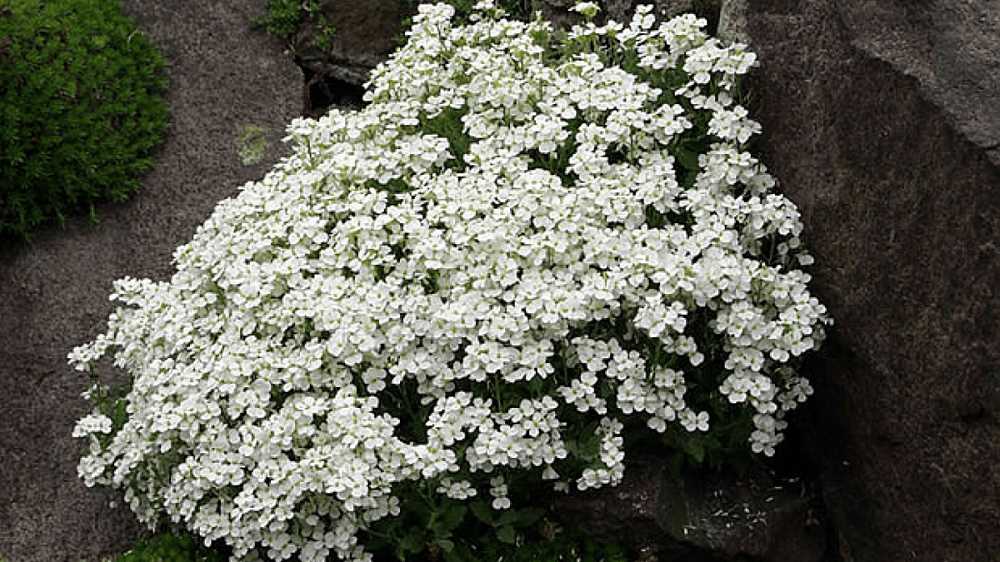
Неправильный режим полива может также стать причиной проблем с арабисом. Недостаток полива может привести к засыханию и увяданию растения, а избыток полива может вызвать гниение корней и развитие грибковых инфекций. Рекомендуется регулярно проверять влажность почвы и подстраивать режим полива в зависимости от потребностей растения.
3. Неподходящие условия выращивания
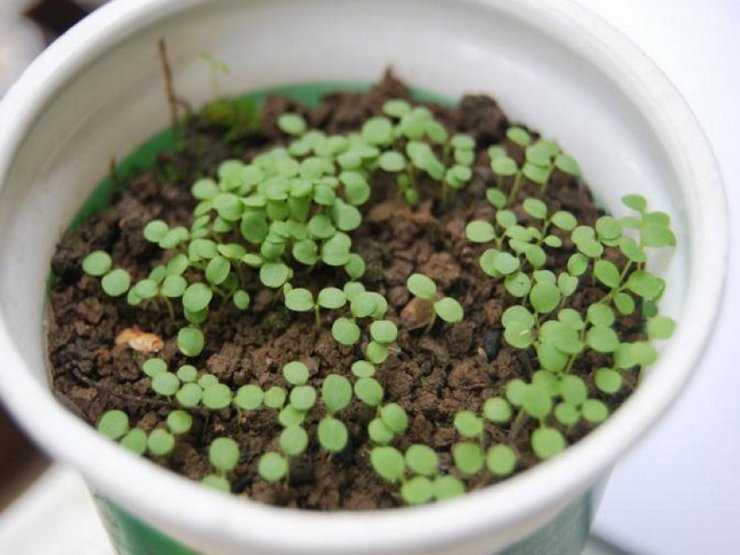
Арабис требует определенных условий для успешного роста и развития. Неправильные условия выращивания, такие как недостаток света, неподходящая температура или неподходящая почва, могут привести к замедлению роста и развития растения. Рекомендуется обеспечить арабису достаточное освещение, оптимальную температуру и плодородную почву.
Возможные проблемы и болезни арабиса могут быть предотвращены и лечены при условии своевременных мер по уходу за растением и поддержанию оптимальных условий выращивания.
Сорта и виды арабиса
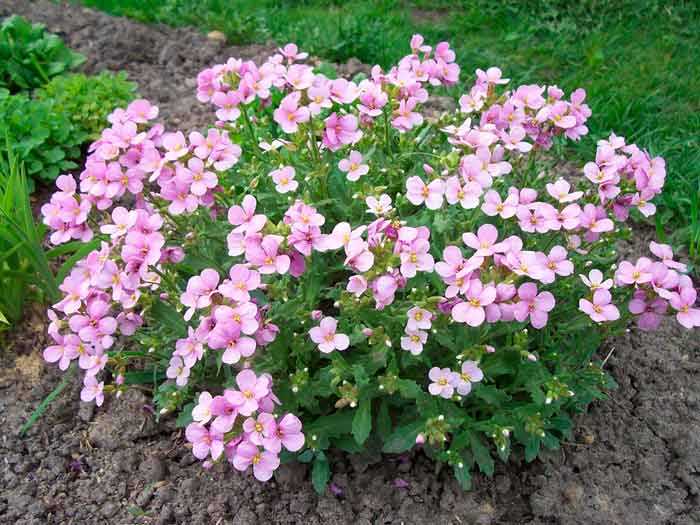
Арабис — это многолетнее растение из семейства капустных, которое широко используется в ландшафтном дизайне и цветоводстве. Существует множество сортов и видов арабиса, каждый из которых имеет свои особенности и применение.
Сорта арабиса для выращивания в саду
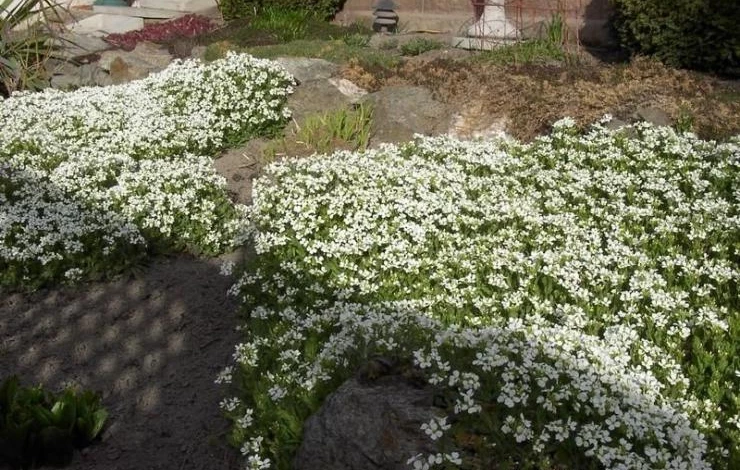
Один из самых популярных сортов арабиса для выращивания в саду — «Снежинка». Его особенностью является белая окраска цветков, которая создает эффект снежного покрова. Этот сорт отличается высокой морозоустойчивостью и долгим цветением.
Другим интересным сортом арабиса является «Роза». Его цветки имеют насыщенный розовый цвет и хорошо сочетаются с другими цветами в саду. Он обладает высокой устойчивостью к засухе и низким температурам.
Виды арабиса для декоративного использования
Один из самых популярных видов арабиса для декоративного использования — «Альпийский». У него компактные размеры и крупные яркие цветы, которые делают его идеальным для оформления горок и альпинариев.
Еще один интересный вид арабиса — «Камчатский». У него яркие фиолетовые цветки и густая зеленая листва, которая сохраняет свой декоративный вид на протяжении всего сезона. Этот вид отлично подходит для создания цветочных композиций и бордюров.
В общем, арабис является универсальным растением, которое можно использовать как в саду, так и в декоративном оформлении. Благодаря своей устойчивости и красивым цветкам, он станет отличным украшением любого участка.
Применение арабиса в ландшафтном дизайне
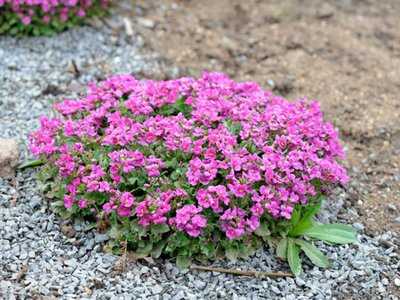
Арабис – это многолетнее растение семейства крестоцветных, которое широко используется в ландшафтном дизайне благодаря своей красивой цветовой гамме и устойчивости к неблагоприятным условиям.
Существует множество сортов и видов арабиса, которые могут быть использованы для создания различных композиций в саду или на газоне. Они отличаются размерами, формой и цветом цветков, что позволяет подобрать растения под определенный стиль или цветовую гамму оформления.
Арабис часто используется для декорирования грядок и клумб, а также для создания живых изгородей и бордюров. Благодаря своей невысокой высоте, арабис подходит также для оформления альпийских горок и каменистых садов.
Выращивание арабиса в ландшафтном дизайне позволяет создать яркие и уютные композиции. Растения могут быть размещены как в отдельных группах, так и в сочетании с другими цветами и растениями. Это создает эффектные и гармоничные композиции, которые привлекают внимание и радуют глаз.
- Арабис позволяет создать контрастные комбинации с другими растениями, такими как лилии, ирисы или пионы.
- Красивые сорта арабиса с яркими цветами могут служить фокусными точками в саду и привлекать внимание.
- Арабис также может использоваться для создания границ и разделения пространства на различные зоны.
В итоге, использование арабиса в ландшафтном дизайне поможет создать красивые и ухоженные композиции, добавить яркие акценты и разнообразить общий вид садового участка.
Собирание семян арабиса

Арабис – это растение семейства капустных, которое известно своей красивой цветущей листвой. Однако, помимо украшения сада, арабис также является источником семян, которые можно использовать для выращивания новых растений.
Если вы хотите собрать семена арабиса, вам следует знать, что существует несколько видов и сортов этого растения. Некоторые из них обладают особыми свойствами или различаются по цвету цветков. Поэтому, когда вы выбираете растение для сбора семян, обратите внимание на его сортовые особенности.
Сбор семян арабиса происходит после цветения растения, когда цветки начинают высыпаться. Чтобы собрать семена, следует аккуратно отрезать цветонос, затем оставить его на сушку на несколько недель. После этого, отдельные семена можно отделить от плодовой оболочки и хранить их в сухом и прохладном месте.
Вопрос-ответ:
Как вырастить арабис из семян?
Для выращивания арабиса из семян потребуется подготовить семена, предварительно пропитав их в растворе стимулятора роста. Затем семена следует посадить в грунт и укрыть пленкой или стеклом для создания теплицы. Важно обеспечить растению регулярный полив и достаточное количество света.
Какие виды арабиса существуют?
Существует множество видов арабиса. Некоторые из них: арабис альпийский, арабис красный, арабис травянистый, арабис древовидный, арабис желтый и другие.
Какие сорта арабиса популярны среди садоводов?
Среди садоводов популярны такие сорта арабиса, как арабис Здравец, арабис Розовый, арабис Вероника, арабис Снежный шар, арабис Флорибунда и другие. Каждый из этих сортов имеет свои особенности и отличается внешним видом и цветом цветков.
Какое время года лучше всего сеять арабис?
Лучше всего сеять арабис весной или осенью. Весной растение активно развивается, а осенью посевы успевают прорасти и закрепиться перед наступлением зимы.
Какой уход требуется для арабиса после посева?
После посева арабиса необходимо обеспечить его регулярным поливом, особенно в периоды засухи. Также рекомендуется регулярно пропалывать сорняки и подкармливать растение удобрениями. Важно следить за тем, чтобы растение получало достаточно света и не перегревалось.


